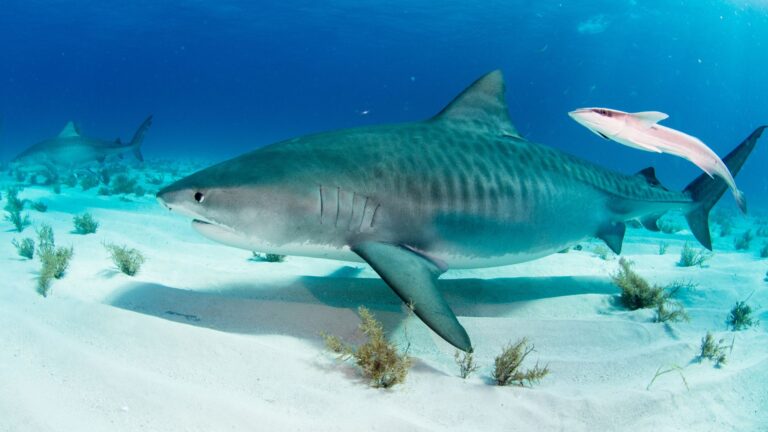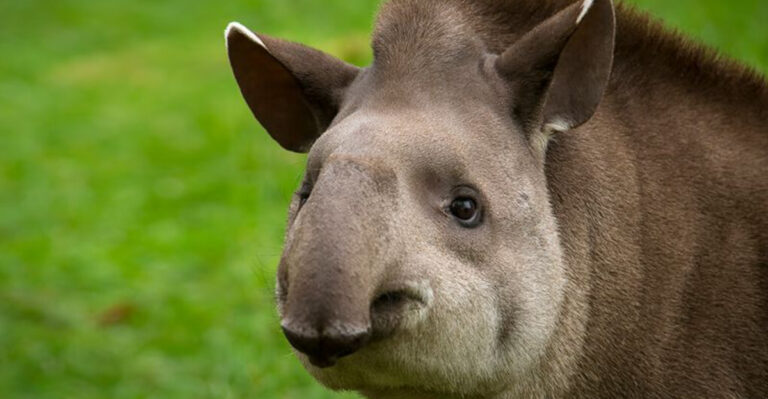15 Fun Facts About Dolphins You Didn’t Know
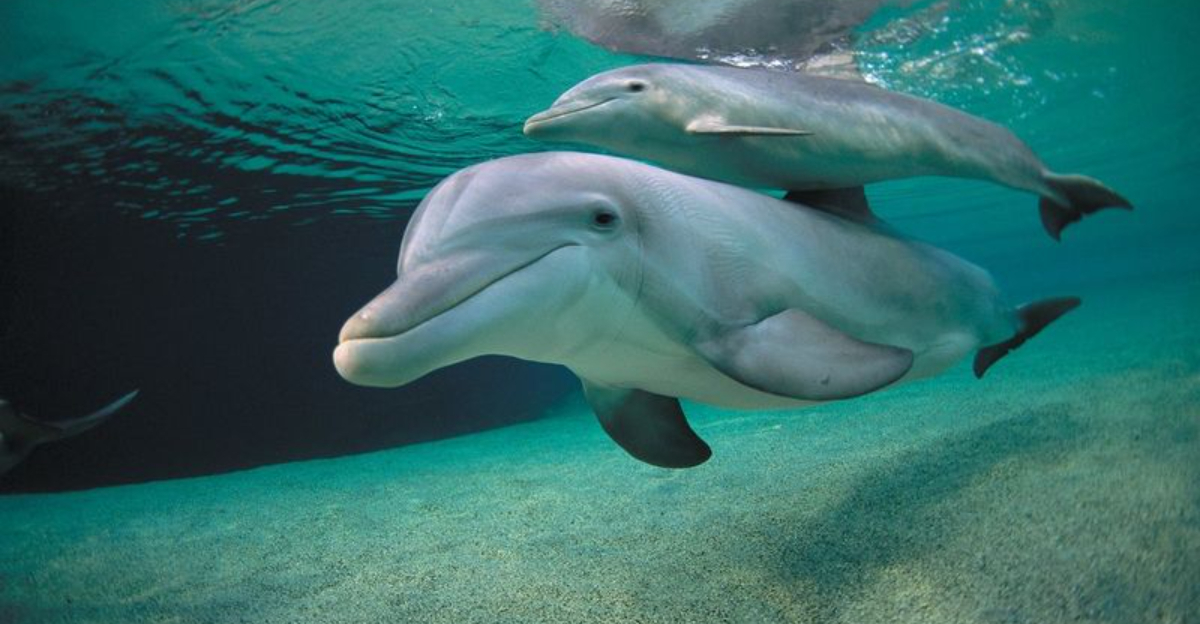
Ever wondered what makes dolphins one of the ocean’s most fascinating creatures? These intelligent marine mammals have captivated humans for centuries with their playful antics and remarkable abilities.
Beyond their acrobatic jumps and friendly appearance, dolphins harbor secrets that might surprise even the most dedicated ocean enthusiasts.
1. Dolphins Sleep With One Eye Open

Half of a dolphin’s brain stays awake while sleeping! This unusual ability allows them to continue breathing and stay alert for predators.
The awake side controls which eye remains open, constantly scanning their surroundings. After a few hours, they switch sides, giving each brain hemisphere a chance to rest while never fully losing consciousness.
2. Dolphin Skin Regenerates Every Two Hours
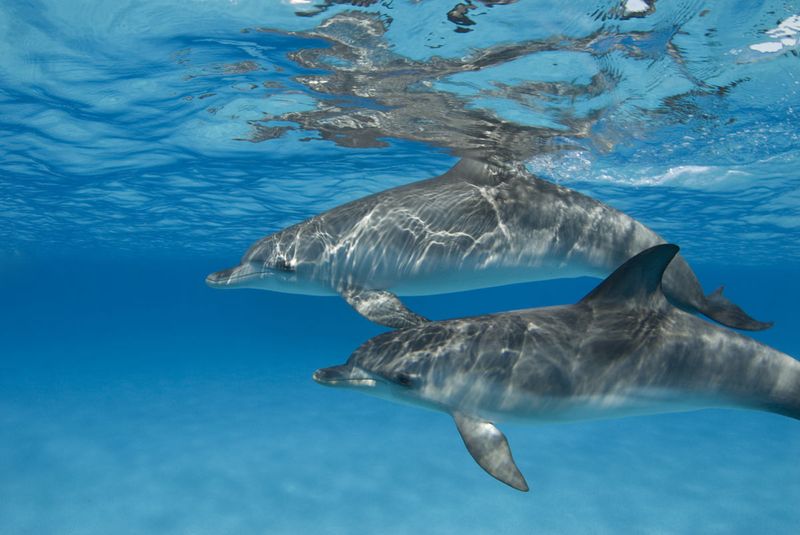
Racing through water creates drag, but dolphins have a brilliant solution. Their skin cells completely renew every two hours – about nine times faster than human skin!
This rapid regeneration keeps their skin ultra-smooth and reduces water resistance. Scientists study this remarkable ability hoping to create better swimsuits and boat designs that mimic dolphin efficiency.
3. They Call Each Other By Name
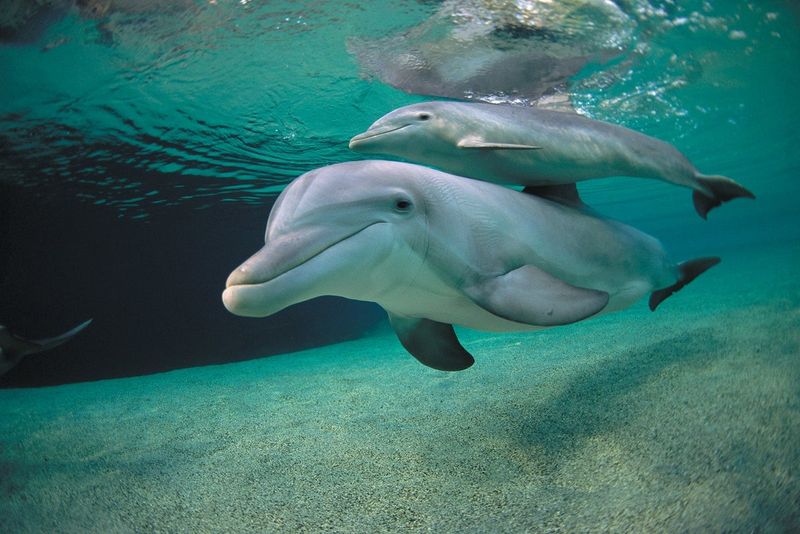
Imagine having your own personal whistle! Every dolphin develops a unique signature whistle by age one that functions like a name. When separated from their pod, they call out their whistle to identify themselves. Even more amazing, other dolphins can mimic these signature whistles when they want to call a specific friend – essentially calling them by name!
4. Dolphin Babies Don’t Sleep For A Month
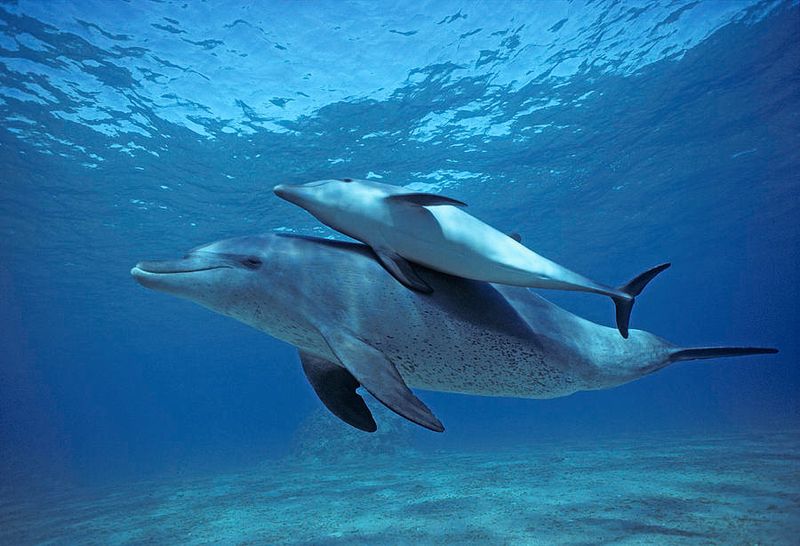
Newborn dolphins and their mothers perform an incredible feat of endurance. For the first month of life, neither gets any sleep!
The baby must constantly swim to reach the surface for air, while mom stays vigilant against predators. This sleepless marathon helps calves develop strength and breathing coordination. Eventually, they master the half-brain sleeping technique adults use.
5. They’re Champion Bubble Ring Makers
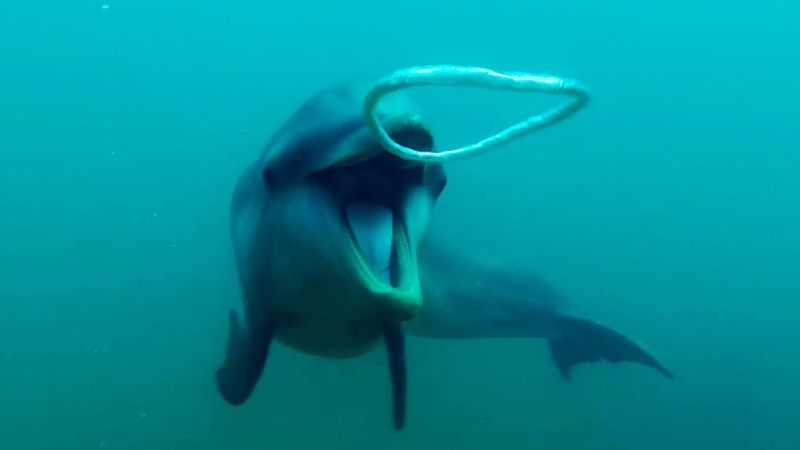
Forget smoke rings – dolphins create perfect underwater bubble rings for fun! By exhaling air in a special way, they form stable, donut-shaped bubbles that maintain their shape underwater. These playful creatures don’t just make them – they’ll swim back through their creation, manipulate it with their fins, or even create bubble vortexes. It’s purely for entertainment, showing their remarkable intelligence.
6. Dolphin Teeth Track Age Like Tree Rings
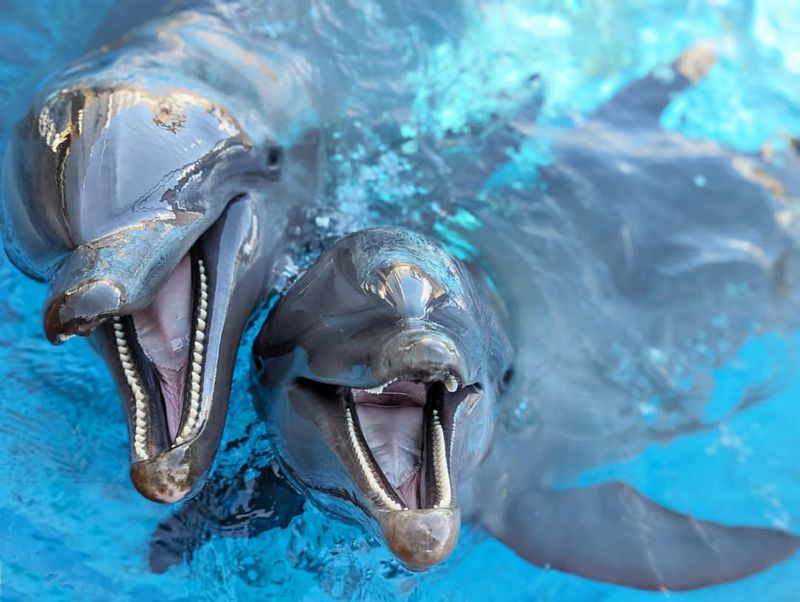
Just like counting tree rings reveals a tree’s age, scientists can determine a dolphin’s age by examining its teeth.
Each tooth develops growth layer groups – visible rings that form annually. By counting these layers in a cross-section of a tooth, researchers can pinpoint a dolphin’s exact age. This technique helps track wild populations and understand their lifespans, which can reach 50+ years.
7. Their Clicks Can Stun Prey

Hunting with sound waves sounds like science fiction, but for dolphins, it’s dinnertime strategy! Their echolocation clicks can reach 220 decibels – louder than a shotgun blast.
When hunting fish, some dolphins emit concentrated sound pulses powerful enough to temporarily stun their prey. The disoriented fish become easy targets, showcasing how dolphins use their built-in sonar as both navigation tool and weapon.
8. Dolphins Have Belly Buttons

Surprising as it seems, dolphins indeed have belly buttons! As mammals, dolphin babies develop inside their mothers connected by umbilical cords, just like humans.
After birth, the cord detaches, leaving a small scar – their belly button. Unlike our “innies” and “outies,” dolphin navels appear as subtle slits. This reminder of their mammalian heritage is visible on their smooth undersides.
9. They Use Tools Like Sponges
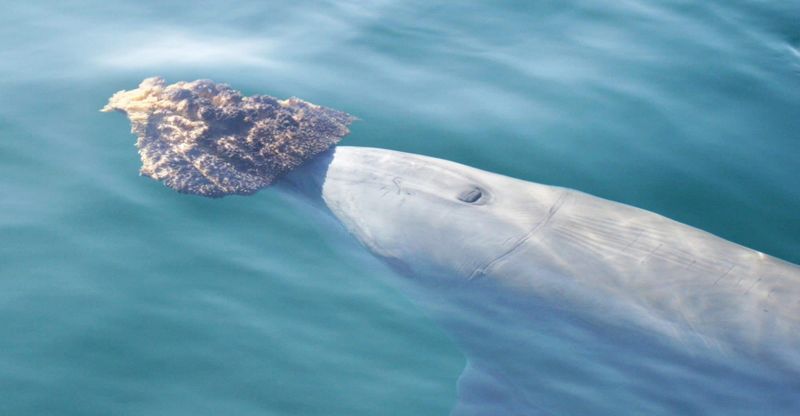
Bottlenose dolphins in Australia’s Shark Bay display remarkable tool use. Some dolphins break off marine sponges and wear them on their snouts like protective gloves! This “sponging” technique protects their sensitive beaks while foraging in rocky seafloor areas. Even more fascinating, mothers teach this skill to their daughters, creating a cultural tradition passed through generations – a rare example of animal culture.
10. Dolphin Skin Feels Like Wet Rubber

Despite appearances, dolphin skin isn’t slimy or scaly! Their skin feels remarkably similar to a wet inner tube or rubber wetsuit.
The smooth, firm texture comes from dense connective tissue and specialized skin cells. Their skin contains no hair or sweat glands but has a thick blubber layer underneath for insulation. The rubbery surface helps reduce drag as they zoom through water.
11. They’re Mathematical Geniuses
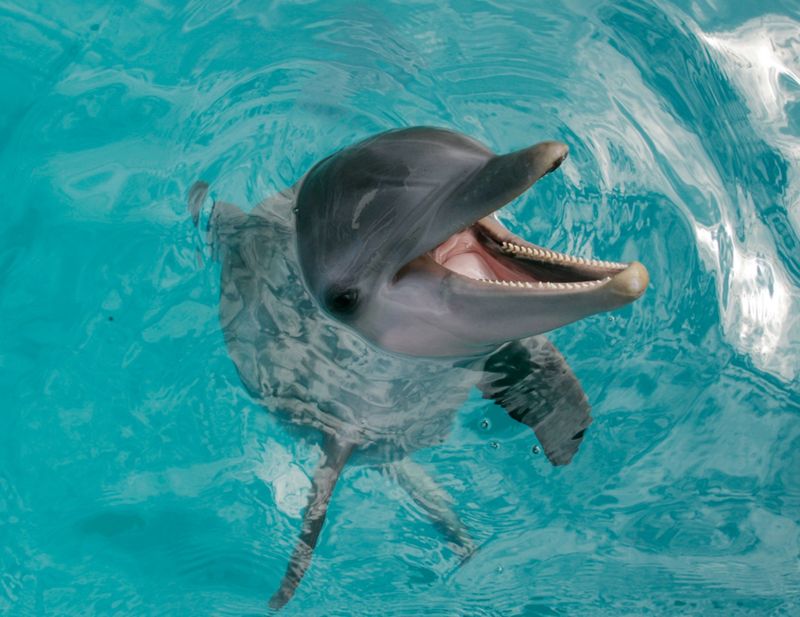
Mathematical abilities might seem unlikely in sea creatures, but dolphins understand numerical concepts! Research shows they can distinguish between quantities and understand the concept of “more” versus “less.”
In experiments, they consistently recognize different number patterns. Even more impressive, dolphins understand zero as a quantity – a concept many primates struggle with. These math skills help them track fish schools and navigate complex environments.
12. Dolphins Have Two Stomachs

Forget the simple single-stomach setup most mammals have! Dolphins possess a two-chamber stomach system similar to cows, though they use it differently.
The first chamber stores food and begins digestion, while the second contains digestive juices for breaking down fish. This dual-stomach approach helps them process their high-protein diet efficiently. Their specialized digestive system extracts maximum nutrition from slippery fish meals.
13. They Can Recognize Themselves In Mirrors

Mirror self-recognition indicates advanced self-awareness, and dolphins pass this test with flying colors! When researchers place marks on parts of their bodies they can’t normally see, dolphins use mirrors to examine these markings.
This rare ability has only been documented in great apes, elephants, and magpies besides dolphins. Their self-awareness extends beyond mirrors – they understand pointing gestures and show awareness of their own knowledge limits.
14. Dolphin Hearts Beat Incredibly Slowly

During deep dives, a dolphin’s heart performs an amazing feat – slowing to just 10 beats per minute! This dramatic slowdown (from their normal 100 bpm) conserves oxygen during extended underwater periods. They redirect blood flow from non-essential organs to the brain, heart and muscles. This physiological adaptation allows them to stay submerged for up to 15 minutes, though most surface every few minutes to breathe.
15. They Never Drink Water
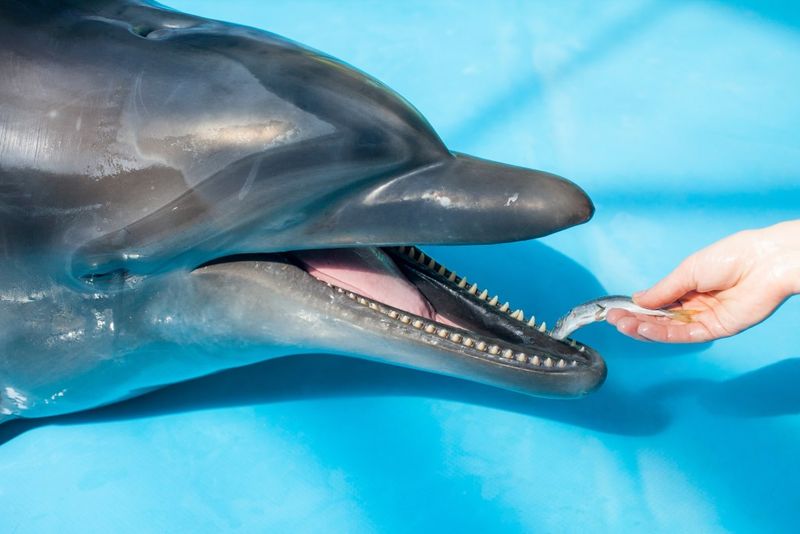
Surrounded by water yet never taking a sip! Dolphins don’t drink seawater because, like us, they can’t process high salt content. Instead, they get all needed moisture from their fish diet. Each fish contains about 80% water, providing sufficient hydration.
Their specialized kidneys extract and recycle freshwater while efficiently eliminating salt. This adaptation eliminates their need to find freshwater sources in the vast ocean.


